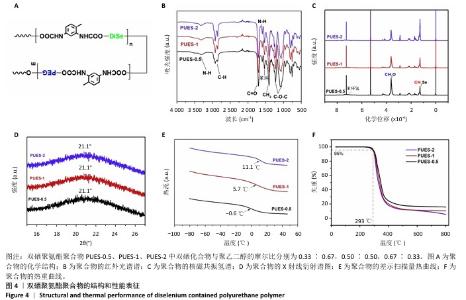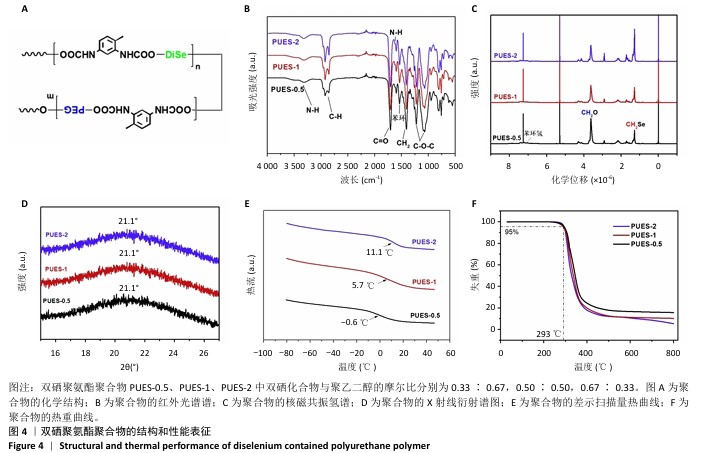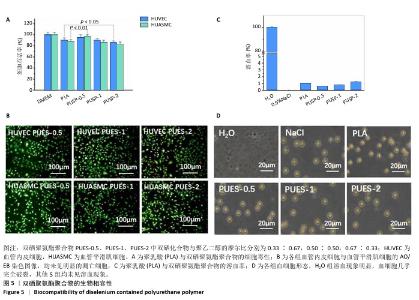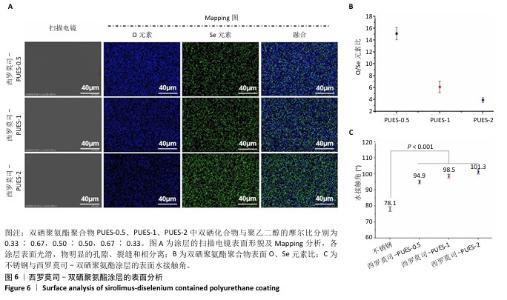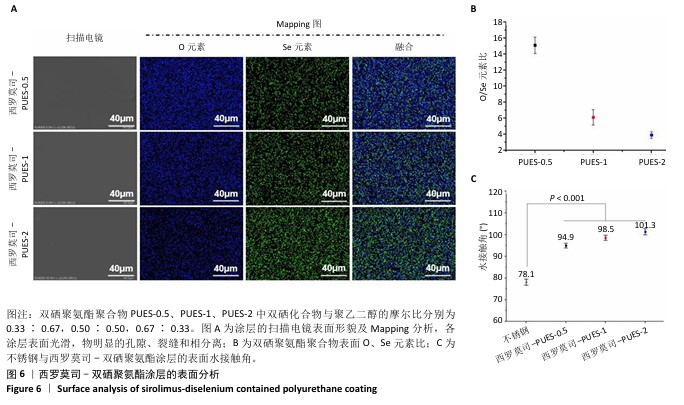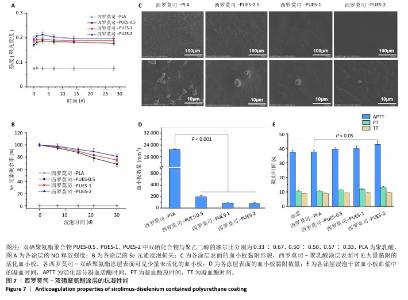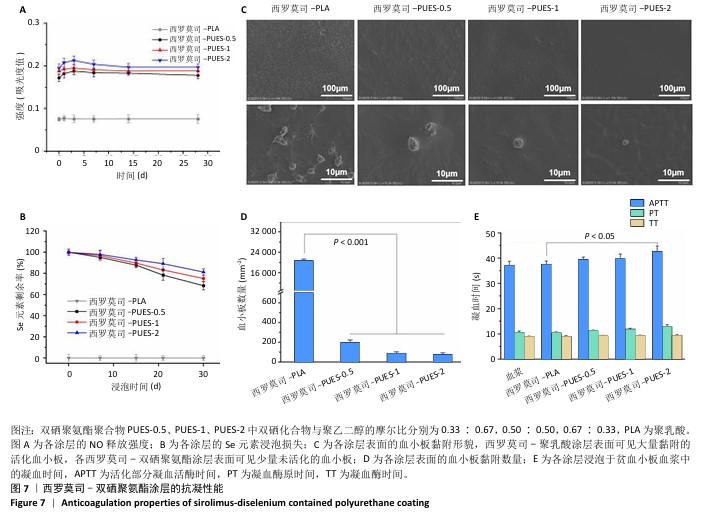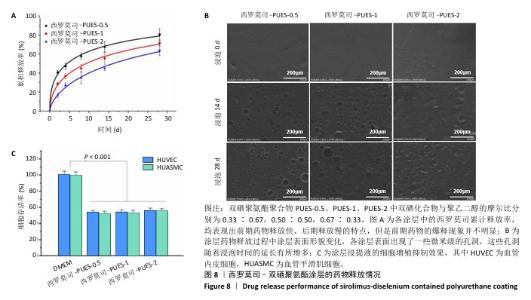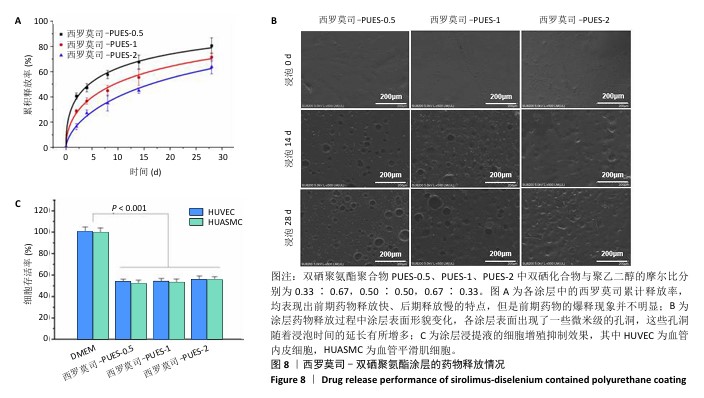[1] MAJEWSKA P, OLEDZKA E, SOBCZAK M. Overview of the latest developments in the field of drug-eluting stent technology. Biomater Sci. 2020;8:544-551.
[2] 李盼,冯静,许博轩,等.冠状动脉血管支架的研究现状[J].医疗卫生装备,2023,44(6):92-100.
[3] HONG SJ, HONG MK. Drug-eluting stents for the treatment of coronary artery disease: A review of recent advances. Expert Opin Drug Deliv. 2022;19(3):269-280.
[4] MAMUDU HM, PAUL TK, WANG L, et al. The effects of multiple coronary artery disease risk factors on subclinical atherosclerosis in a rural population in the United States. Prev Med. 2016;88:140-146.
[5] 刘永兴,彭万忠,杨海萍,等.药物洗脱支架置入后早期冠状动脉支架内血栓的危险因素分析[J].中国心血管杂志,2019,24(1):67-70.
[6] 张艳艳.药物洗脱支架植入术后最佳双联抗血小板疗程[D].石家庄:河北医科大学,2019.
[7] HASSAN S, ALI MN, GHAFOOR B. Evolutionary perspective of drug eluting stents: from thick polymer to polymer free approach. J Cardiothorac Surg. 2022;17(1):65.
[8] 栾轲,班雨,施德安,等.医用高分子材料抗凝血表面构建策略及研究进展[J].功能高分子学报,2021,34(2):172-181.
[9] 石恒冲,车超越,栾世方,等.低并发症医用涂层构建策略研究进展[J].功能高分子学报,2020,33(2):141-147.
[10] PENG J, LI K, DU Y, et al. A robust mixed-charge zwitterionic polyurethane coating integrated with antibacterial and anticoagulant functions for interventional blood-contacting devices. J Mater Chem B. 2023;11(33):8020.
[11] ZHU T, GAO W, FANG D, et al. Bifunctional polymer brush-grafted coronary stent for anticoagulation and endothelialization. Mater Sci Eng C Mater Biol Appl. 2021;120:111725.
[12] YANG L, WU H, LIU Y, et al. A robust mussel-inspired zwitterionic coating on biodegradable poly (L-lactide) stent with enhanced anticoagulant, anti-inflammatory, and anti-hyperplasia properties. Chem Eng J. 2022; 427:130910.
[13] ZHANG Y, MAN J, LIU J, et al. Construction of the mussel-inspired PDAM/lysine/heparin composite coating combining multiple anticoagulant strategies. ACS Appl Mater Interfaces. 2023;15(23): 27719-27731.
[14] HOSSEINNEJAD A, LUDWIG N, MERSMANN S, et al. Bioactive Nanogels Mimicking the Antithrombogenic Nitric Oxide-Release Function of the Endothelium. Small. 2023;19(14):e2205185.
[15] 刘诗琛.上转换纳米粒子调控的尿激酶和一氧化氮控释平台用于靶向溶栓和抗凝治疗[D].南昌:南昌大学,2022.
[16] RUSSO I, BARALE C, MELCHIONDA E, et al. Pasquale Platelets and Cardioprotection: The Role of Nitric Oxide and Carbon Oxide. Int J Mol Sci. 2023;24(7):6107.
[17] CHOE JA, UTHAMARAJ S, DRAGOMIR-DAESCU D, et al. Magnetic and Biocompatible Polyurethane Nanofiber Biomaterial for Tissue Engineering. Tissue Eng Part A. 2023;29(15-16):413-423.
[18] WIENEN D, GRIES T, COOPER SL, et al. An overview of polyurethane biomaterials and their use in drug delivery. J Controlled Release. 2023; 363:376-388.
[19] SINGH S, PASWAN KK, KUMAR A, et al. Recent Advancements in Polyurethane-based Tissue Engineering. ACS Appl Bio Mater. 2023; 6(2):327.
[20] XIANG Z, CHEN H, XU B, et al. Gelatin/heparin coated bio-inspired polyurethane composite fibers to construct small-caliber artificial blood vessel grafts. Int J Biol Macromol. 2024;269(Pt 1):131849.
[21] FATHI-KARKAN S, BANIMOHAMAD-SHOTORBANI B, SAGHATI S, et al.
A critical review of fibrous polyurethane-based vascular tissue engineering scaffolds. J Biol Eng. 2022;16(1):6.
[22] ADHAMI M, PICCO CJ, DETAMORNRAT U, et al. Clopidogrel-loaded vascular grafts prepared using digital light processing 3D printing. Drug Delivery Transl Res. 2024;14(6):1693-1707.
[23] WEI S, WU J, GU X, et al. Low protein adsorption and high cellular activity of PEG-based silicone polyurethane for artificial heart valves. Mater Today Commun. 2024;39:109357.
[24] DEHGHANI F, KHORASANI MT, MOVAHEDI M, et al. Fabrication of polyurethane - Heparinized carbon nanotubes composite for heart valves application. Mater Chem. 2022;280:125819.
[25] WU H, DAI T, AO W, et al. The role of segmental mixing on the mechanical properties and oxidative stability of polydimethylsiloxane-based polyetherurethane. Polymer. 2022;261:125401.
[26] NOROUZ F, POORMOGHADAM D, HALABIAN R, et al. A Novel Nanocomposite Scaffold Based on Polyurethane (PU) Containing Cobalt Nanoparticles (CoNPs) for Bone Tissue Engineering Applications. Curr Stem Cell Res Ther. 2023;18(8):1120-1132.
[27] GHIMIRE U, JANG SR, ADHIKARI JR, et al. Conducting biointerface of spider-net-like chitosan-adorned polyurethane/SPIONs@SrO2-fMWCNTs for bone tissue engineering and antibacterial efficacy. Int J Biol Macromol. 2024;264(Pt 1):130602.
[28] ZHANG T, LI J, WANG Y, et al. Hydroxyapatite/Polyurethane Scaffolds for Bone Tissue Engineering. Tissue Eng Part B Rev. 2024;30(1):60-73.
[29] ZHU T, ZHOU M, GAO W, et al. Coronary stents decorated by heparin/NONOate nanoparticles for anticoagulant and endothelialized effects. Langmuir. 2020;36(11):2901-2910.
[30] ZHANG J, KE X, HUANG M, et al. NO released via both a Cu-MOF-based donor and surface-catalyzed generation enhances anticoagulation and antibacterial surface effects. Biomater Sci. 2023;11:322-338.
[31] LI H, GUO Q, TU Q, et al. Nitric oxide-generating self-assembling peptide hydrogel coating for enhancing hemocompatibility of blood-contacting devices. J Mater Sci Technol. 2022;131:106-114.
[32] 杨祥良,王芹,陶云海,等.一种合成二硒化钠和有机二硒化物的新方法[J].无机化学学报,2001,17(6):905-907.
[33] 汤朋,刘兰轩,曹东萍,等.有机涂层附着机理及附着力提高方法综述[J].材料保护,2020,53(2):126-135.
[34] V PINTO R, ANTUNES F, PIRES J, et al. A comparison of different approaches to quantify nitric oxide release from NO-releasing materials in relevant biological media. Molecules. 2020;25(11):2580.
[35] 杨梦毅,黄楠,熊开琴,等.促内皮和抗炎的丹参酮IIA洗脱支架涂层研究[J].表面技术,2024,53(6):222-233.
[36] 庞诗梦,夏荣,李趁趁,等.钛表面新型抗菌涂层的生物相容性研究[J].安徽医科大学学报,2022,57(9):1355-1359.
[37] 黄灿锋,朱东雨,姜涛,等.人工血管用PVA/CMCS/OCD水凝胶的制备及性能研究[J].现代化工,2022,42(S02):152-165.
[38] ZHAO Z, ZONG L, LIU C, et al. Dual strengthened corrosion control of biodegradable coating on magnesium alloy for vascular stent application. Prog Org Coat. 2023;174:107297.
[39] 赵铮,丁文飞,邵淑馨,等.西罗莫司-聚三亚甲基碳酸酯改性镁合金的降解和药物释放行为[J].中国组织工程研究,2023,27(30): 4836-4843.
[40] FENG C, ZHU D, CHEN L, et al.Targeted Delivery of Chlorin e6 via Redox Sensitive Diselenide-Containing Micelles for Improved Photodynamic Therapy in Cluster of Differentiation 44-Overexpressing Breast Cancer. Front Pharmacol. 2019;10:369.
[41] 王薇.聚酯织物的聚氨酯/明胶涂层及其生物相容性研究[D].青岛:青岛大学,2022.
[42] 钟杨,武衡,成志,等.雷帕霉素抑制血管平滑肌细胞增殖的研究进展[J].临床和实验医学杂志,2009,8(4):130-131.
[43] TÁBORSKÁ J, RIEDELOVÁ Z, BRYNDA E, et al. Endothelialization of an ePTFE vessel prosthesis modified with an antithrombogenic fibrin/heparin coating enriched with bound growth factors. RSC Adv. 2021; 11(11):5903-5913.
[44] 王玉龙,李雅琼,林泽,等.双硫键和双硒键在自修复聚氨酯脲弹性体中的应用[J].高校化学工程学报,2023,37(3):413-420.
[45] YANG Z, YANG Y, ZHANG L, et al. Mussel-inspired catalytic selenocystamine-dopamine coatings for long-term generation of therapeutic gas on cardiovascular stents. Biomaterials. 2018;178:1-10.
|
